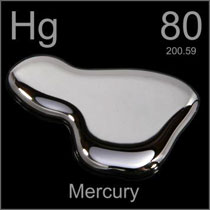Author, Kerry Marsh, B. Ed., B. Ag. Sc., is a leading expert in equine hTMA. She is a popular lecturer, and a contributor to several Equine publications. Ms. Marsh provides hTMA consultation services to horse owners and elite trainers worldwide. We are greatful for her contribution and advocacy efforts furthering the awareness and appreciation of the value of hTMA for equine health and performance.
Toxic Heavy Metals - Equine Health Implications
Author: Kerry Marsh, B. Ed., B. Ag. Sc.
Toxic heavy metals, are abundant in Australia (and the rest of the world). They are found in soil, air, feeds and water supplies and can be absorbed by plants, grasses and herbage. Heavy metals are known as such due to their high atomic weight. Small (trace) amounts of some heavy metals are beneficial to horse health, but when they are not metabolized they accumulate in the tissues causing significant health problems. This article is not about poisoning due to heavy metals but about how continued low-level exposure affects mineral balance and ultimately causes symptoms. The observations are from some of the many horse's hair tissue tested over the last five years.
Contents
- Where do toxic (heavy) metals come from?
- Common Toxic Heavy Metals that May Affect Your Horse
- Conclusion
- References

Elemental toxic metals and their chemical relationships are illustrated on the periodic table of elements. Also identified is the symbol, atomic number, and mean atomic mass value for the natural isotopic composition of each element. The table has wide application in chemistry, physics, biology and provides a useful framework to systematize and compare different forms of chemical behavior.
Where do toxic (heavy) metals come from?
Toxic heavy metals come from industrial exposure such as coal smoke, metal smelting, exhaust fumes, land fill, chemicals, chemical fertilizers used in agriculture, pesticides, herbicides, fungicides, old lead or metal water pipes, old metal water tanks, mining and most commonly from water supplies particularly bore water.
Many horse owners do not consider the health of their soil in relation to the health of their horse. Increasingly, horse owners fail to conduct regular soil tests and therefore fail to apply regular applications of lime. The lower pH soils have difficulty coping with heavy metals particularly aluminium.
Horse feeds and hay grown on such soils or soils that are constantly treated with chemical fertilizers, pesticides, fungicides etc., contain varying levels of toxic metals such as cadmium, lead, aluminium, mercury, arsenic, and nickel. Heavy metals prevent the absorption of nutritional elements such as calcium, magnesium, potassium, cobalt, sulphur and trace minerals making the soil sick and the feed grown on them nutritionally deficient.

Common Toxic Heavy Metals that May Affect Your Horse
Based on the analyses of hair tissue samples from hundreds of horses, we find many of the metals listed below are usually present in differing levels. Symptoms of heavy metal toxicity in horses may take years to develop. Once exposure to a significant amount of a toxic metal has occurred, it stays in the system until an antagonist removes it and the minerals it displaced are replaced. Most heavy metals cross the placental barrier and affect the foetus (fetus).
- Aluminium
- This element is abundant everywhere. The most common metal toxicity found in horses. This metal has no known function in the horse. Mostly horses come into contact with aluminium through pre packed feeds where it is used as an anti caking agent to prevent feeds setting hard. Also found in some horse wormers. It is in acidic soils and horses ingest it via the grasses grown on such soil. A lot of water supplies also contain large amounts of aluminium especially dam water and bore water. Aluminium is an insidious health problem for horses as it prevents phosphorus from being absorbed and affects the calcium/phosphorus ratio. High aluminium in the horse may cause colics, ulcers, lack of bone density, stiffness, periodic lameness, fractures, weight loss and condition.
- Arsenic
- Small amounts of arsenic are beneficial to the horse but once it accumulates it has serious health repercussions. Most of the horses that showed an elevated level of arsenic were living in gold mining areas. The soil and water were contaminated with arsenic which the horses ingested. Other common sources of arsenic are in treated pine posts which horses often chew. Symptoms of arsenic toxicity may be liver pain and or dysfunction, hoof problems, rough dry coat, hair loss, muscle weakness, stiff gait, skin conditions.
- Cadmium
- Mostly this is found in horses that have been on pastures fertilized with rock phosphates and superphosphate. More common in grazing horses. Also found in sewerage sludge that has been used as a fertiliser. It accumulates in plants/grasses and as a result found in hay fertilized with the above products. Older horses have been found to have very high levels of cadmium in the kidneys. Symptoms may be lameness, swollen joints, foals suffer orthopaedic disease.
- Lead
- This metal poses a serious health concern to horses. I have found that horses living near busy freeways always have a level of lead present. Horses that do not have an adequate level of calcium seem to be more susceptible to lead absorption. Most often found in old stables painted with lead based paint, from rain water collection from a lead flashed roof, lead water pipes. Symptoms may be loss of condition and failure to gain weight, muscle weakness, colics, roaring, easy to tire.

- Mercury
- Not so commonly found in horses but the number affected is increasing. Mercury is found in mining and smelting areas, fossil fuel combustion, pesticides, herbicides and fungicides. Methylmercury is the most dangerous. Horses living near broad scale cropping/farming areas that use chemicals are more at risk. Horses drinking river water in intensive farming areas were found to have the highest levels. Symptoms may be nervous system damage, muscle spasms, loss of weight, colics, diarrhea, skin rashes.
- Nickel
- Small amounts of nickel are beneficial to horse health. It is found in small amounts in feeds and pastures, soil and water supplies, metal troughs, steel products. It is relatively non toxic unless there is a continued exposure from other than the above sources. Symptoms are commonly decreased growth rate, weight loss, accumulates in the kidneys, muscle tremors, rough coat.
Conclusion
Hair Tissue testing is the only accurate method for detecting heavy metals as toxic metals are not found in blood except immediately after acute exposure. Toxic metals accumulate in soft tissues not blood or urine. Once the source of toxicity is identified, a mineral balancing program is recommended and it takes between five to seven months to bring elevated heavy metals to an acceptable level.
References
- Trace Elements in Human and Animal Nutrition, Mertz.W. (1986).
- Handbook on the Toxicology of Metals, Nordberg.G. (1988).
- Clinical and Diagnostic Veterinary Toxicology, Osweiller. G. (1985).
Editor's note: This article may or may not contain minor editing from the original document. Editing is done for one or more reasons: technical issues, layout or space considerations, content accuracy and/or clarity. © Copyrighted content is owned by the author. Please contact the author if you have any questions or would like to use any of their content for any reason whatsoever. Thank you.